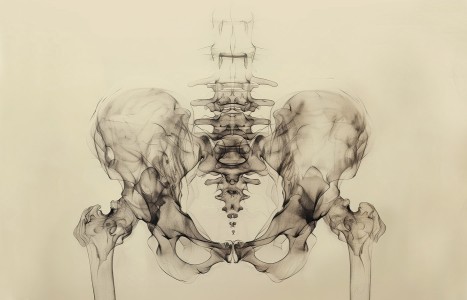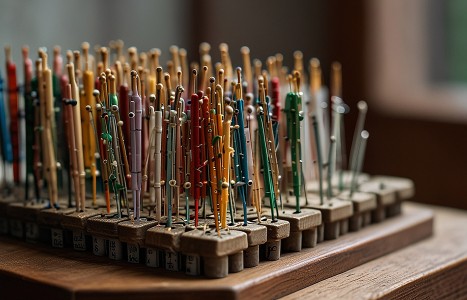People today want convenience, whether it be from their bank, credit card, favorite retail store, or restaurant. They demand it from the companies who hold their loyalty, including their health care providers (you). They don’t want to call and possibly be put on hold, and they want to use an app or schedule an appointment on your website. Here are three reasons your practice can gain by switching to online appointment scheduling.
Mechanism vs. Vitalism: The Wall That Stands Between Medical and Alternative Health Care
After more than two decades in the health care trenches, I have done my best to reach out to MDs and other medical providers on behalf of acupuncture and chiropractic. Prior to enrolling at Logan College of Chiropractic, I was a psychiatric technician at a local mental health center. Here, I was first introduced to the concept of the "health care team": various disciplines, approaches and professionals working together for the patient's overall best interest and care. Excited about what I saw as an emerging paradigm, I entered chirorpactic school with the optimism inclination that in the years to come, we would lock arms with our medical brethren as equal partners in providing the best health care in the world. Some 20 economically battle-scarred years later, my world perspective is not quite so rosy. Any DC in practice for more than a few years has come to know the sting of contempt by the medical "overlords," who tenaciously cling to their self-appointed role as the "guardians of public health." We've even weathered continuing efforts, perviously overt and recently more covert, of professional discrimination and persecution.
Setting aside obvious political and commercial motives for a moment, I would like to discuss, for purposes of insight, what is a major a priori assumption driving the rank-and-file medical practitioner to cast a blind eye to facts of research as well as clinical experiences.
About 100 years ago, a debate raged in scientific circles regarding the nature of life and its creation/creator. In this struggle, two very different and opposing positions contested for recognition as being the "truth": mechanism vs. vitalism. Plainly speaking, the mechanistic folks believed that the universe was a giant machine, set into place by mere chance and sheer accident (read: no design nor purpose), and therefore nothing that could not be examined, measured or explained in that context was superstition and unreal. The vitalistic folks believed that there was a special quality to life beyond mere "action/reaction" thinking (and therefore had some great design and purpose), and that implied the existence of some cosmic designer/creator. Sadly, this became a not-so-subtle platform for debating the very existence of God, and our relational responsibilities to Him.
To make a long story short (and to only a few of us, interesting), the mechanistic crowd won. Given the primitive state of technology at the time, the microvoltages were considered totally inconsequential. They figured, "What could you power with such small amounts of electricity?" Now we know, 100 years later, that all of our integrated circuit chips function on microvolts; cell phones, desktop and laptop computers, etc., perform billions of calculations per second. But to 19th century scientists, nothing comparable existed. Therefore, no viable evidence in their opinion was collected. And so, as sociopolitical opinion gradually shifted to an accidental/mechanical mindset, the "archaic" vitalists were dismissed, forced out or merely ignored. Research direction and money was not made available for a notion that was seen as quaintly sentimental but wholly unscientific, held only by witch doctors, chiropractors, backwoods preachers and other lunatics.
Here stands the fundamental barrier between conventional and alternative health care. The mechanistic approach views the body as a mere purposeless conglomerate of chemical and mechanical functions. Since there is no creator/guiding force, an "enlightened source," the human mind, must intervene to find and fix any problem. The vitalistic approach treats the organism as a unique entity created for a purpose. Since something/someone made it, we must respect that it has been endowed with the potential to heal itself. One group says, "We've got to fix it." The other group says, "We want to help it."
I won't go into lengthy discussions over the old-fashioned Newtonian model of reality (that the universe is a vast collection of infinite yet separate units). This view was given up over 50 years ago by the leading physicists as being essentially flawed (read: "doesn't really work"). They now see the universe as the only one complete entity with an almost infinite set of interdependent/interactice parts, responsive in its very nature to these parts. However, I will tell you that there is one bastion of the old-fashioned way of thinking in modern science: Western biological sciences.
So now, we find ourselves in an interesting dilemma. The vitalistic paradigm has been resurrected, partly out of growing research being done overseas, and partly out of our gut instice that it was, and still is, true. But the very group (the medical community) that should be reaching out to embrace it, is continuing to dismiss it. It is here that we could look at the political and commercial factors, but that's fodder for another article. Suffice it to say that the average MD, running a practice (and making a good living at it), is in most probability not entirely conscious to these collective forces in history. Nonetheless, his understanding has been tainted by all those that came before him, and it is these foundational beliefs that stand at the back of his mind, casting cynical doubt about what we TCM practitioners have to bring to the health care table.


